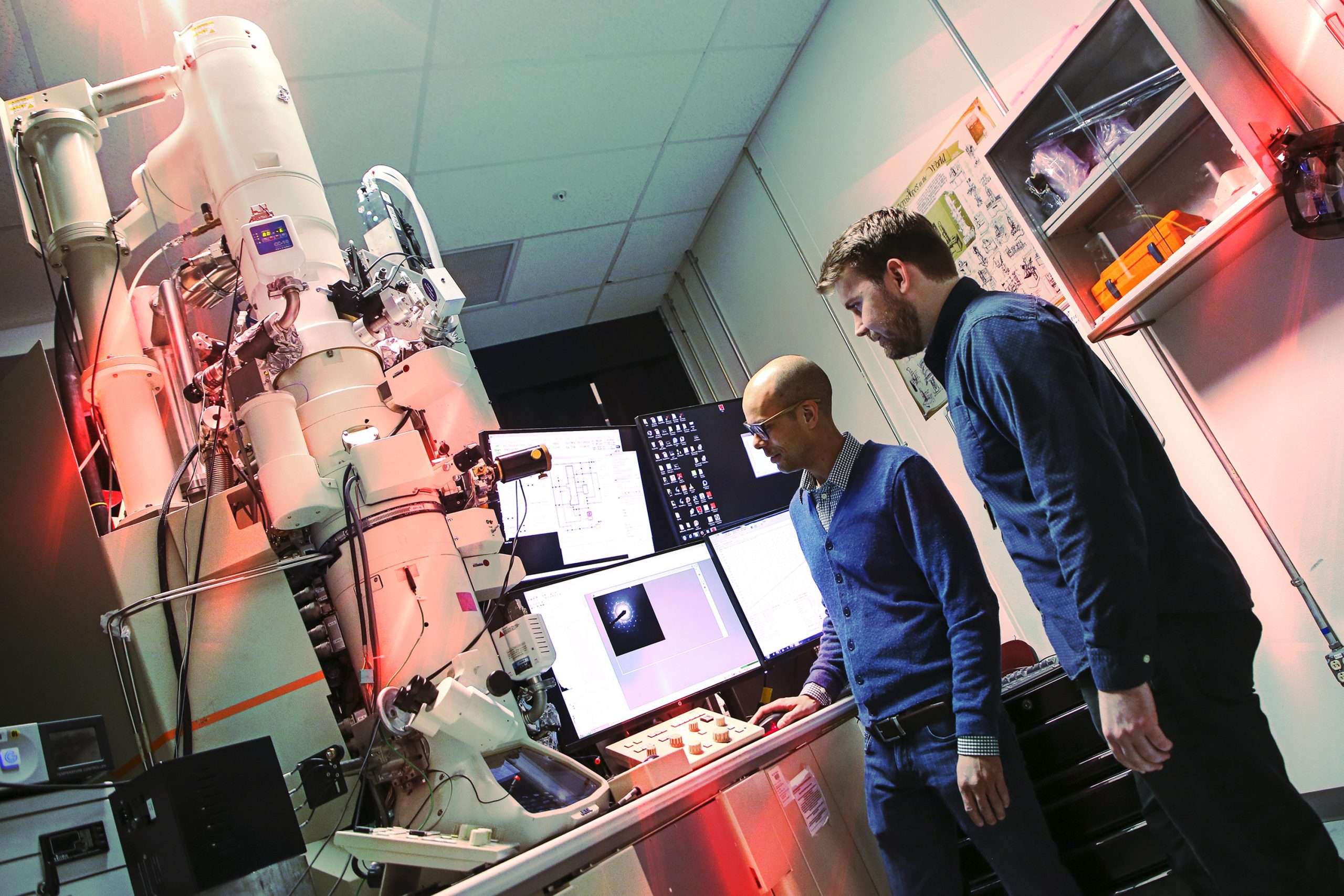
Gray and white flecks skitter erratically on a computer screen. A towering microscope looms over a landscape of electronic and optical equipment. Inside the microscope, high-energy, accelerated ions bombard a flake of platinum thinner than a hair on a mosquito’s back. Meanwhile, a team of scientists studies the seemingly chaotic display, searching for clues to explain how and why materials degrade in extreme environments.
Based at Sandia, these scientists believe the key to preventing large-scale, catastrophic failures in bridges, airplanes and power plants is to look — very closely — at damage as it first appears at the atomic and nanoscale levels.
“As humans, we see the physical space around us, and we imagine that everything is permanent,” Sandia materials scientist Brad Boyce said. “We see the table, the chair, the lamp, the lights, and we imagine it’s always going to be there, and it’s stable. But we also have this human experience that things around us can unexpectedly break. And that’s the evidence that these things aren’t really stable at all. The reality is many of the materials around us are unstable.”
But the ground truth about how failure begins atom by atom is largely a mystery, especially in complex, extreme environments like space, a fusion reactor or a nuclear power plant. The answer is obscured by complicated, interconnected processes that require a mix of specialized expertise to sort out.
The team recently published in the academic journal Science Advances research results on the destabilizing effects of radiation. While the findings describe how metals degrade from a fundamental perspective, the results could potentially help engineers predict a material’s response to different kinds of damage and improve the reliability of materials in intense radiation environments.
For instance, by the time a nuclear power plant reaches retirement age, pipes, cables and containment systems inside the reactor can be dangerously brittle and weak. Decades of exposure to heat, stress, vibration and a constant barrage of radiation break down materials faster than normal. Formerly strong structures become unreliable and unsafe, fit only for decontamination and disposal.
September 28, 2022